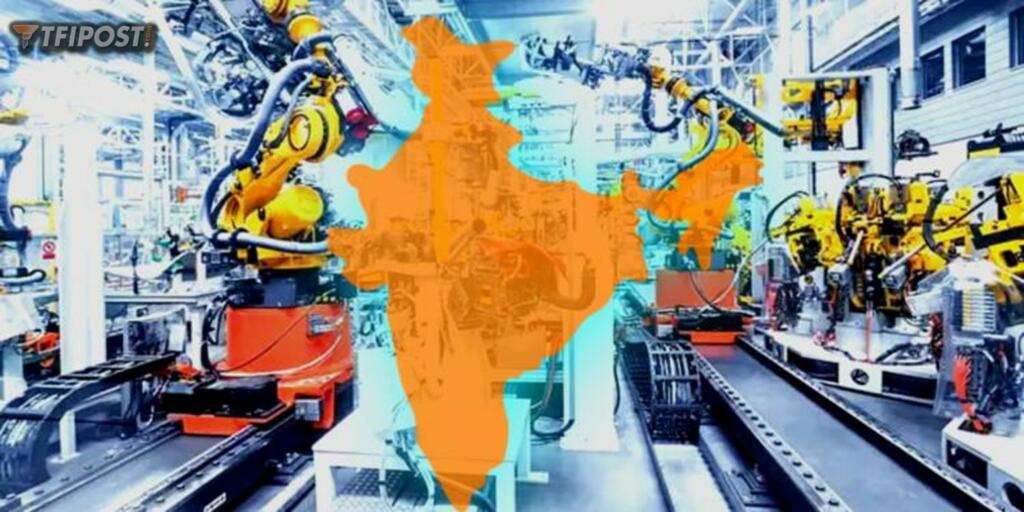Thanks to the efforts of the Modi government in the last 8 years, India’s manufacturing is picking up slowly. The government launched plenty of schemes including Production Linked Incentive (PLI), Make in India, and made a massive investment into infrastructure in order to bring down logistics costs which was a big hurdle in making Indian manufacturing competitive.
India’s PMI 8 months high
July’s Purchase Manager’s Index (PMI) was 8 months high, showing a secular expansion of manufacturing in the country. The PMI rose to 56.4 in July as compared to 53.9 in June, therefore, remaining well above the 50-level separating growth from contraction for the thirteenth month.
The continuous incentives being provided to multiple sectors, especially to defence, pharmaceuticals, electronics, and automobiles have started paying off as the export of these items are increasing and domestic consumption is also picking up.
“Aggregate new order intakes rose substantially in July, recovering the growth momentum lost in June. The latest increase was in fact the most pronounced since last November, with quicker expansions recorded in all three broad areas of the manufacturing industry,” (sic) stated the PMI Survey.
Rahul Bajoria, MD & Chief India Economist, Barclays, said: “India’s July manufacturing PMI accelerated, in contrast to the regional trend, which shows general weakness, especially in export-oriented economies. Still, the weakening global growth outlook and tightening domestic financial conditions could weigh on India’s economic recovery in the coming months.” (sic)
“The divergence in India’s headline PMI relative to the rest of the region may also reflect the resiliency of India’s domestic demand recovery. And even as global growth weakens, we expect India’s domestic growth to remain reasonably robust. For June, core industries output continued to show reasonable activity levels, while credit growth continues to improve. While the RBI will strive to engineer a soft-landing of the economy, we think some growth sacrifice will be inevitable,” (sic) he added.
The Modi government is also providing incentives to various sectors where India’s domestic capacity is weak. It has rolled out a ₹6,322 crore PLI scheme for India’s steel sector.
Also Read: With an emphasis on Aatmnirbharta, India is ‘deglobalizing’ its economy
Smartphone Industry: An excerpt of PLI Schemes in different sectors
PLI scheme is India’s giant leap to become a major smartphone manufacturer which aligns well with its aim to be a global manufacturing hub in the coming years. It is slated to create more than a million jobs in India, of which 3,00,000 will be created directly and an additional 9,00,000 will be created indirectly.
The entry into the Indian smartphone manufacturing industry is a boon for Apple and Samsung. With over one billion wireless subscribers and more than 350 million users still reliant on basic phones, India offers a huge market to tap in. A rapidly rising middle class further creates ample space for smartphone manufacturers.
Apple is considering moving 20 per cent of its production capacity out of China. And it couldn’t have found a better opportunity than the PLI scheme. This could lead to the Silicon Valley Company’s contract manufacturers engaging their presence in India.
Similarly, laptop manufacturers, white goods manufacturers, and automobile manufacturers are also moving their factories out of China in order to benefit from India’s PLI scheme. Very soon, India would become AatmaNirbhar (self-reliant) in several areas – from semiconductors to laptops, automobiles to medicines. And in this unstable world, AatmaNirbharta (self-reliance) is the key to success.
Support TFI:
Support us to strengthen the ‘Right’ ideology of cultural nationalism by purchasing the best quality garments from TFI-STORE.COM
